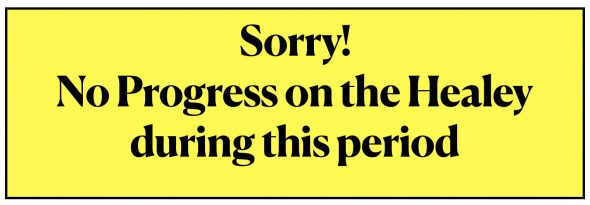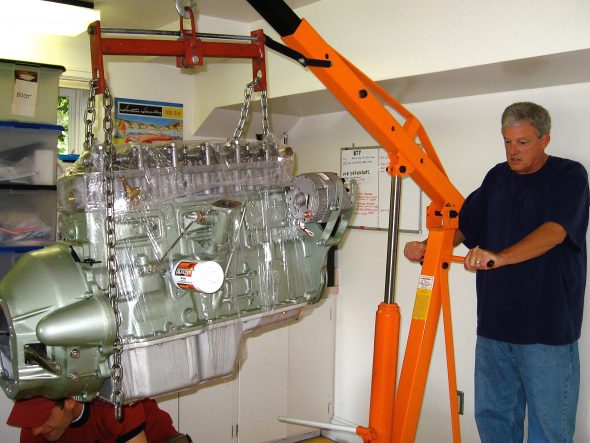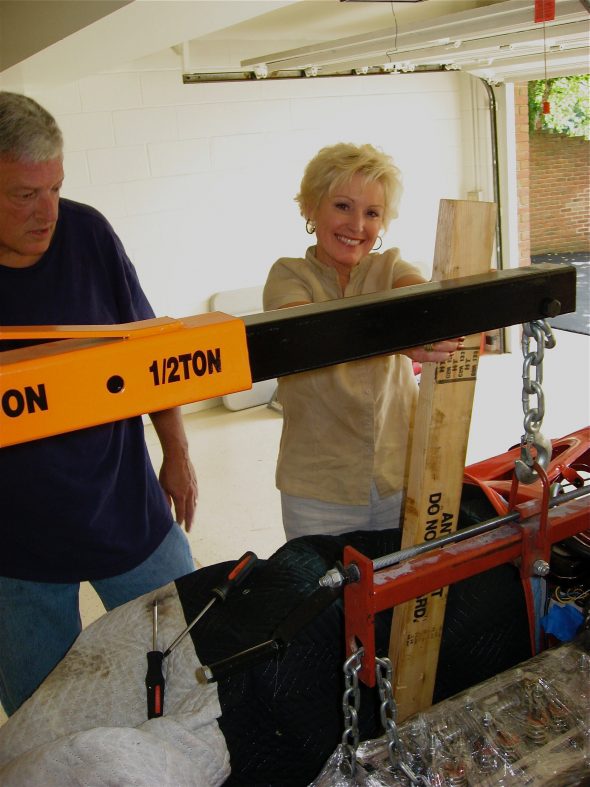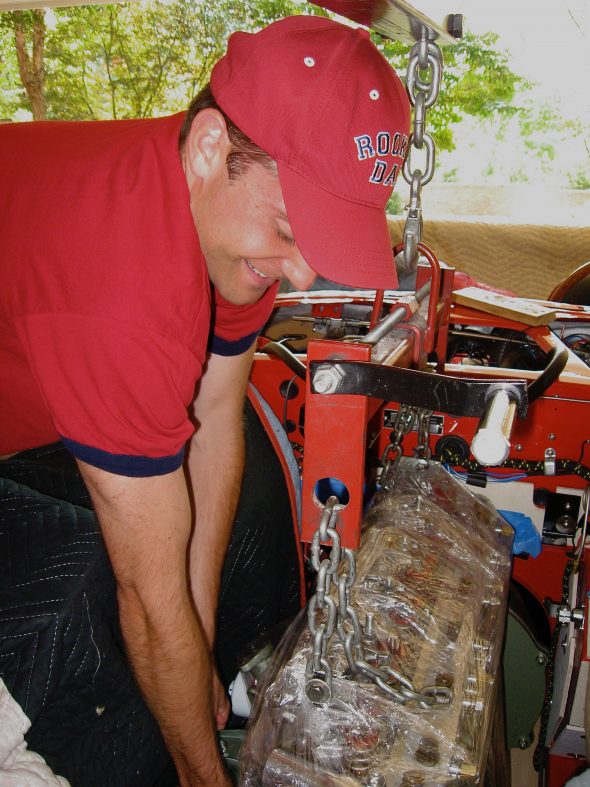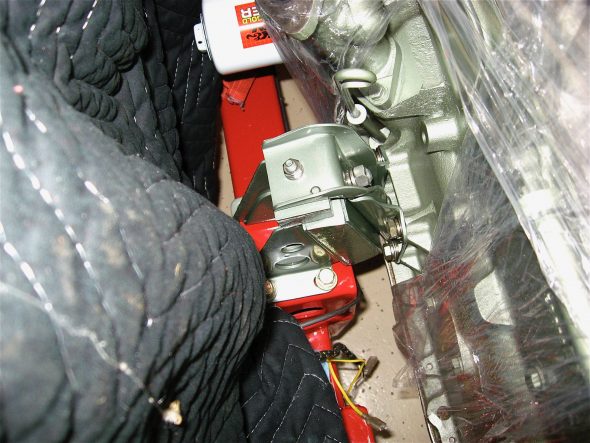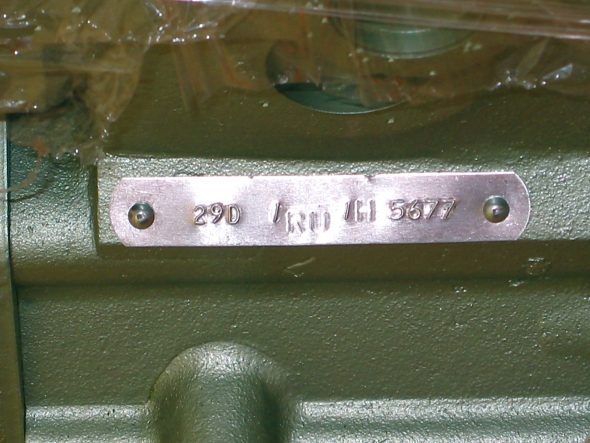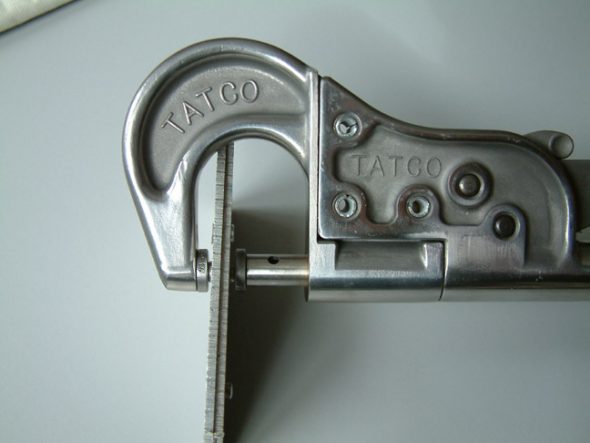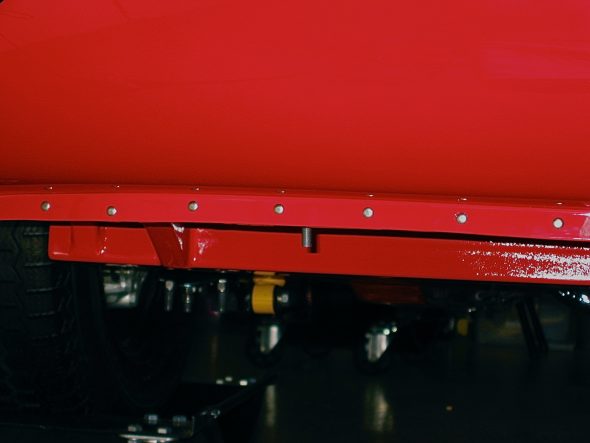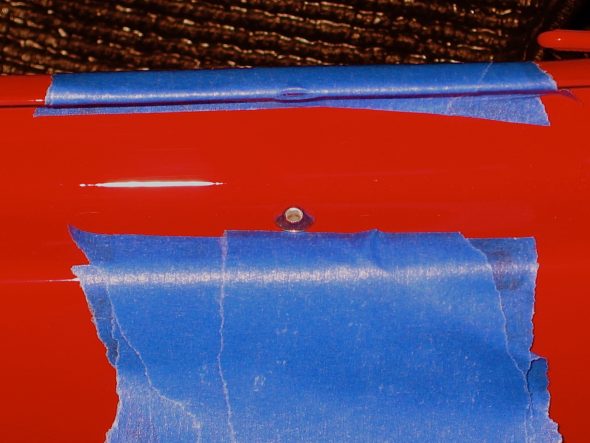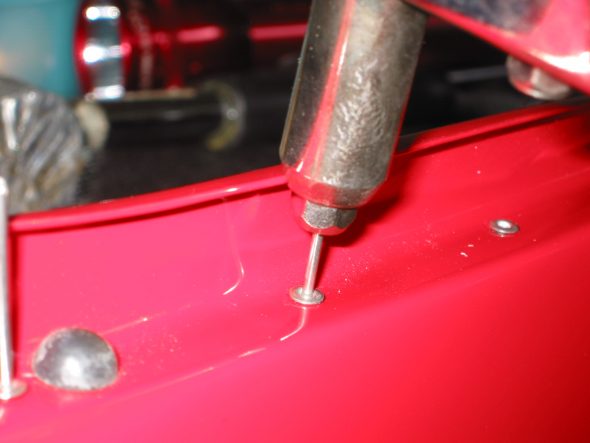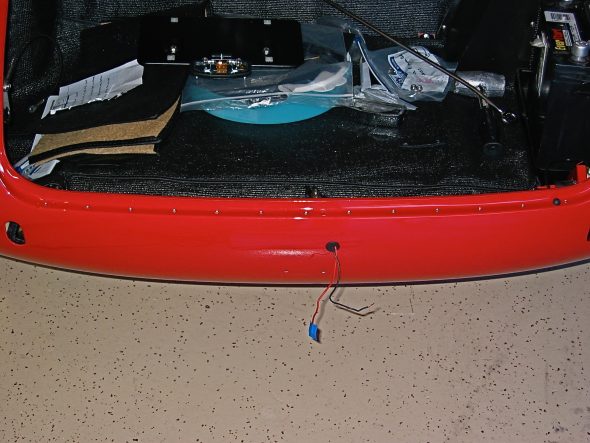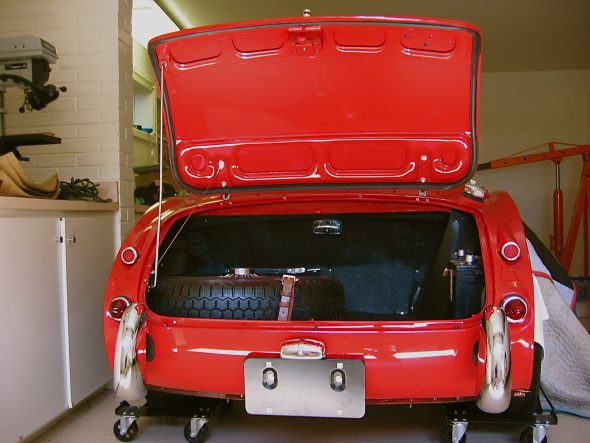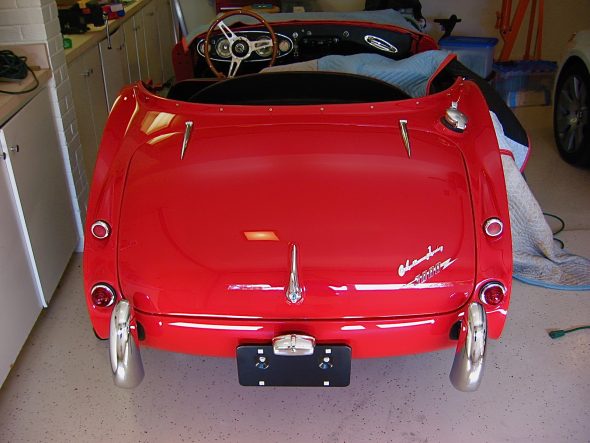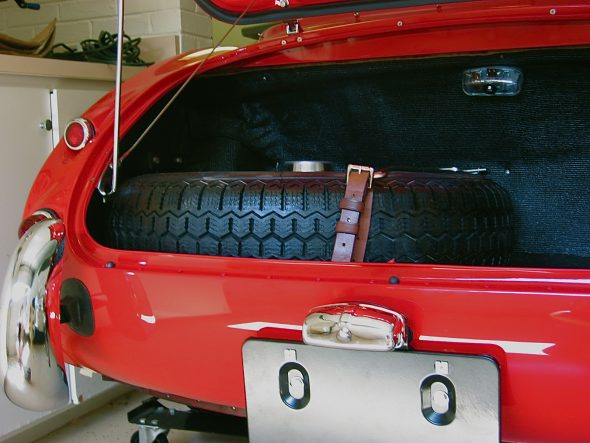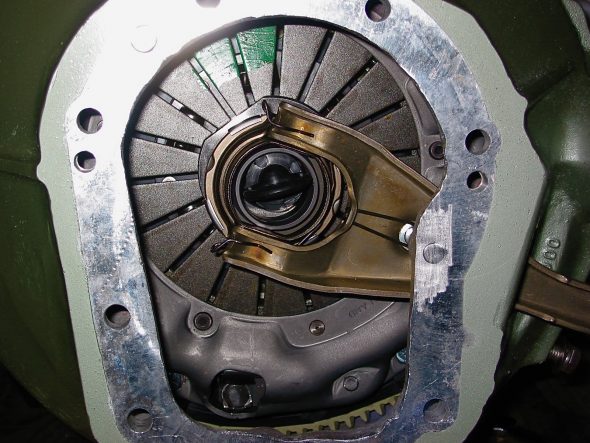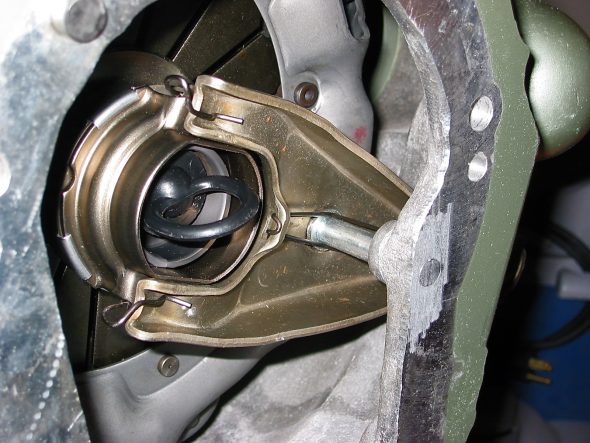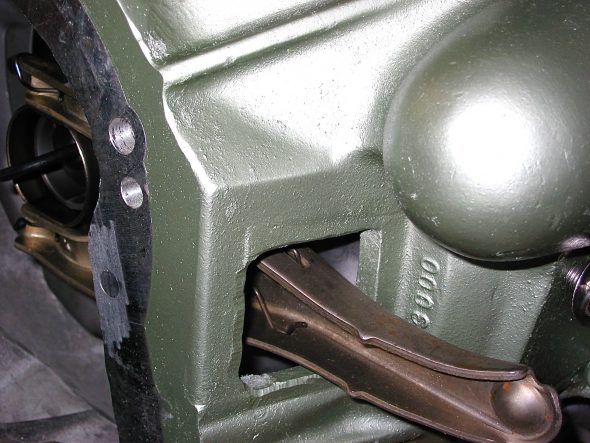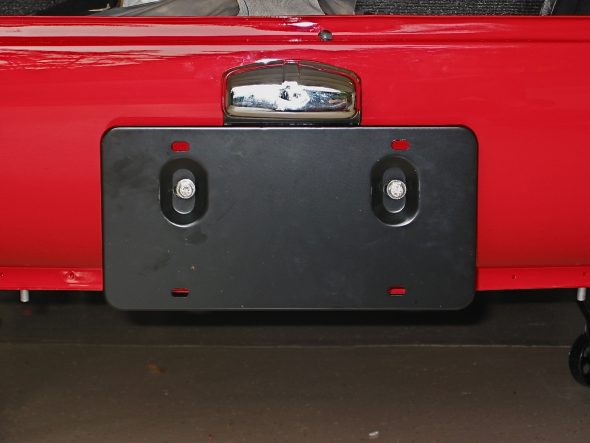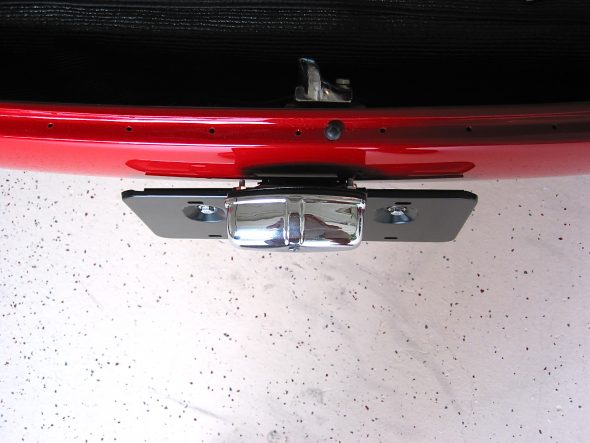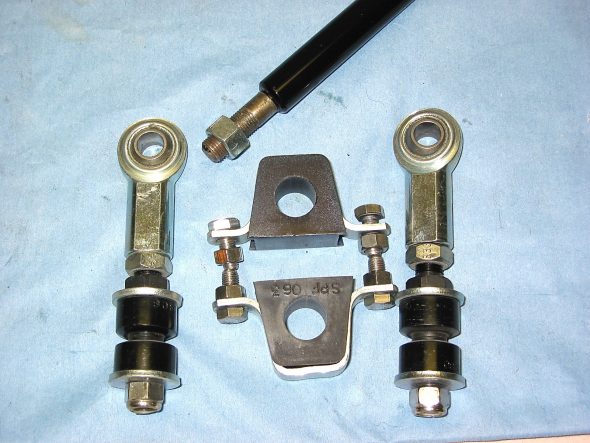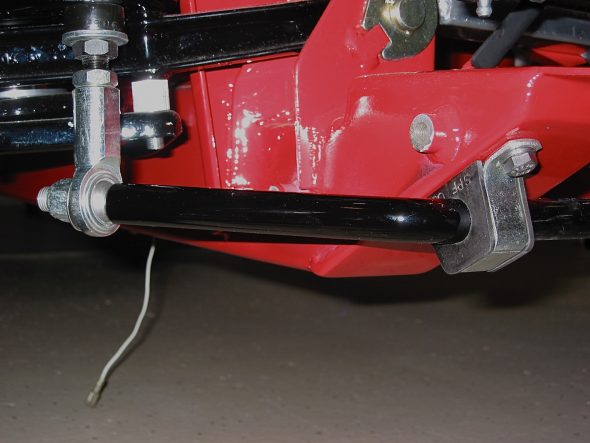Away for travel
Category Archives: September 2007
Chapter 70 Week Forty September 17, 2007
With a little help from a work colleague, my wife and an engine hoist I was able to get the motor with bell housing into the car without one scratch or knick in the paint! We took our time and patience paid off. I tightened down the engine mounts and then put a short jack stand under the bell housing to support the rear of the engine.
I had previously bled the slave cylinder so it was an easy task to mount it to the side of the bell housing, insert the Smitty provided push rod, and try out the mechanism by pushing the clutch pedal. The longer fulcrum pin I had made (with directions from Tracy Drummond) worked perfectly. Special thanks to my engine installation assistants – couldn’t have done the job without them.
I did take a minute to install the engine identification number plate on the engine block. I had a new one made by Clarke Spares & Restorations and it looks very authentic.
I am going out of the country for two weeks so things will have to sit a while until I return and get back to work. The next step will be to pull the engine back out, attach the gearbox to the bell housing, fasten the assembly to the engine and put it all back in the car. I suppose I could have skipped the clutch test, but what are a few more hours in a six year restoration!
Chapter 69 Assembly Week Thirty-Nine September 10, 2007
The next job to be tackled was the installation of the rivets for the rear shroud to the frame. There are 19 aluminum flush face rivets for the lower lip of the car and another 13 rivets that attach the shroud to the rear boot frame rail.
First, I put a healthy bead of 3M body caulk between the two pieces to keep water out of the boot. I clamped things together as best I could and inserted pop rivets in the frame rail just to line the components up properly. The aluminum rivets for the lower lip were sourced from British Car Specialists. I purchased a rivet squeezer tool from Brown Aviation Tools with the 2003-16 1/8” rivet set to use for the job. An expensive tool at $135 for one little job! The tool worked nicely. After an initial “squeeze” with the tool, I put five small #10 washers on the rivet set to pull them closer together and squeezed the rivet again. I ended up with a very satisfactory job. As per original specifications, I then painted the lower lip satin black.
There just wasn’t room to use the rivet squeezer for the boot rail-to-shroud assembly so I used 1/8” diameter, 1/4” long aluminum pop rivets for the job. The nose of the rivet gun wanted to hit the boot lip so I put about three thicknesses of blue painter’s masking tape around the area to protect the paint. I did get two small nicks that were touched up, but otherwise the project was a success. It pays to take your time on the rivet job if you are assembling after painting.
Following the rivet work I installed the rear bumper bars and rally bumpers supplied by Cape International. New rubber grommet seals were installed on each bar, paying attention to the LH/RH designation. I am very pleased with the look of the rally bumpers, although one is not afforded much protection by these full bumper replacements!
The next task was to install the boot lid. This turned out to be pretty easy. Again I protected the body with some blue painter’s masking tape and with the help of my wife, put the lid in place and tightened down the boot hinges. After getting the lid in place, I needed to adjust the boot lid striker so that it would fit properly to latch the boot lid. I then attached the boot lid control cable to the lower hinge post and I was in business!
Before the final installation of the engine, I decided to fit the clutch assembly and Smitty Bellhousing to the block and put in the car to make sure the clutch was working properly. I wanted to make sure that I had sufficient room for the clutch fork to function once connected to the slave cylinder. Some might call this a little anal, but if you install with just the bellhousing and not the gearbox, you can view everything to ensure success later!
Chapter 68 Week Thirty-Eight September 3, 2007
Since I am using rally bumpers on the “Bloody Beast” rather than the standard rear bumper, I needed to develop a custom rear license plate bracket. I combined the stock bracket with a later BJ8 bracket that provides a space for the Lucas license plate lamp. All of this was a little heavy to hang on just the two holes in the rear of the aluminum shroud, so I fabricated a small steel plate to mount inside the shroud and sandwiched the shroud with two homemade gaskets of 1/16” black rubber. The assembly looks nice and I think provides a satisfactory solution given the lack of a bumper on which to mount it.
Having taken the car off the wooden dollies I had made to transport it from my home to Maple Hill Restoration, I was able to get to the lower part of the front suspension and install the Cape International 3/4” anti-sway bar.

